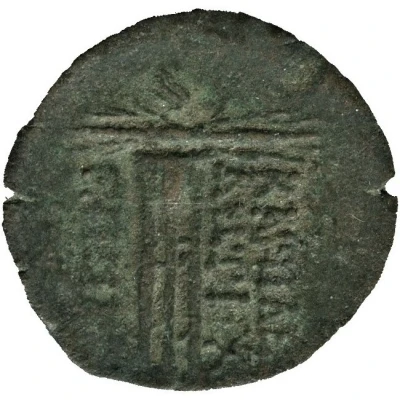


© Albator (CC BY-NC-SA)
Dichalkon -Antiochos VIII 119 BC - 113 BC
| Bronze | 5.3 g | 19 mm |
| Issuer | Seleucid Empire (Seleucid Empire (305 BC - 64 BC)) |
|---|---|
| King | Antiochos VIII Grypos (125 BC - 96 BC) |
| Type | Standard circulation coin |
| Years | 119 BC - 113 BC |
| Value | Dichalkon (1⁄24) |
| Currency | Drachm |
| Composition | Bronze |
| Weight | 5.3 g |
| Diameter | 19 mm |
| Shape | Round (irregular) |
| Technique | Hammered |
| Orientation | Medal alignment ↑↑ |
| Demonetized | Yes |
| Updated | 2024-10-10 |
| Numista | N#272234 |
|---|---|
| Rarity index | 93% |
Reverse
Tripod surmounted by thunderbolt.
Script: Greek
Lettering:
ΒΑΣΙΛEΩΣ
ΑΝΤΙΟΧΟΥ
ΕΠΙΦΑΝΟΥΣ
Translation: BASILEWS ANTIOXOY EPIFANOYS (King Antiochos, God manifest)
Interesting fact
One interesting fact about the Dichalkon coin of Antiochos VIII from the Seleucid Empire is that it features a unique blend of Greek and Persian design elements. The obverse side of the coin depicts the king's bust, wearing a royal diadem, while the reverse side shows a seated Apollo holding a lyre, surrounded by Greek inscriptions. This fusion of Hellenistic and Persian motifs reflects the cultural diversity of the Seleucid Empire, which spanned across much of the ancient Near East and Central Asia.



